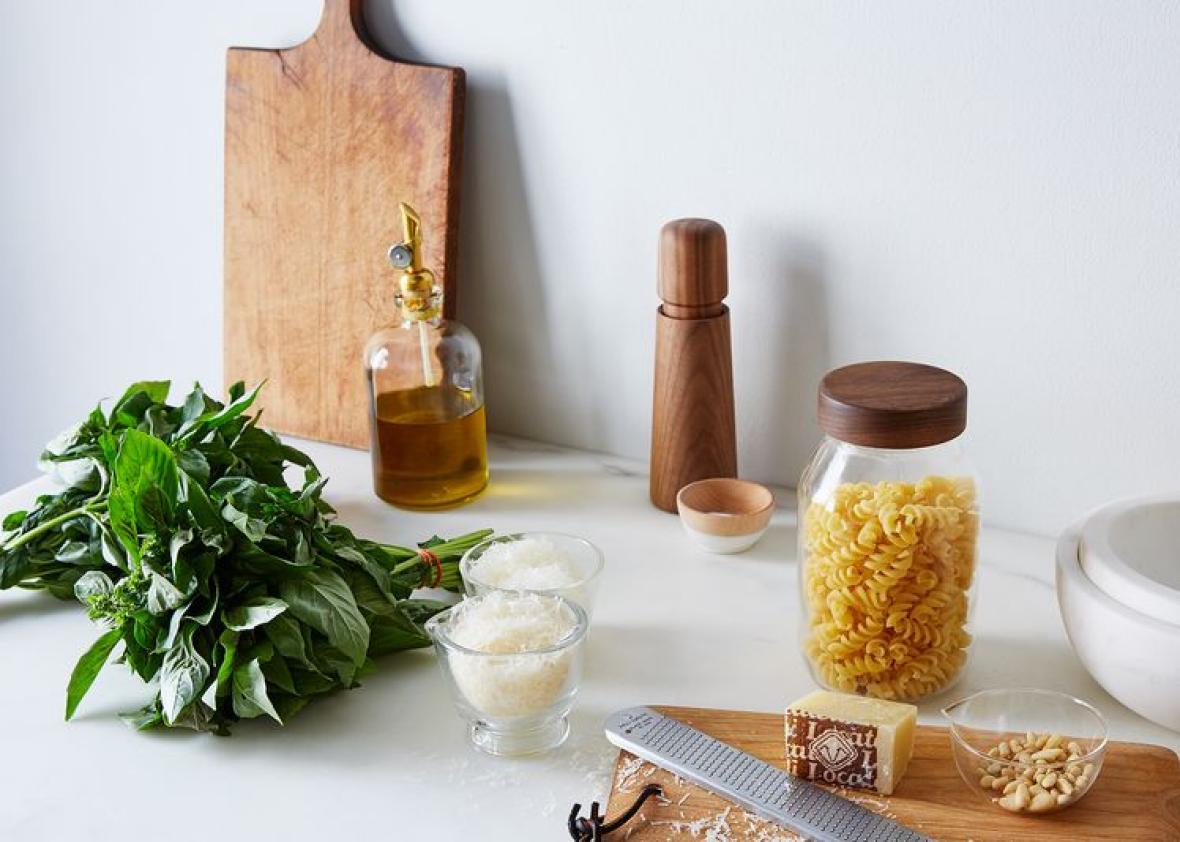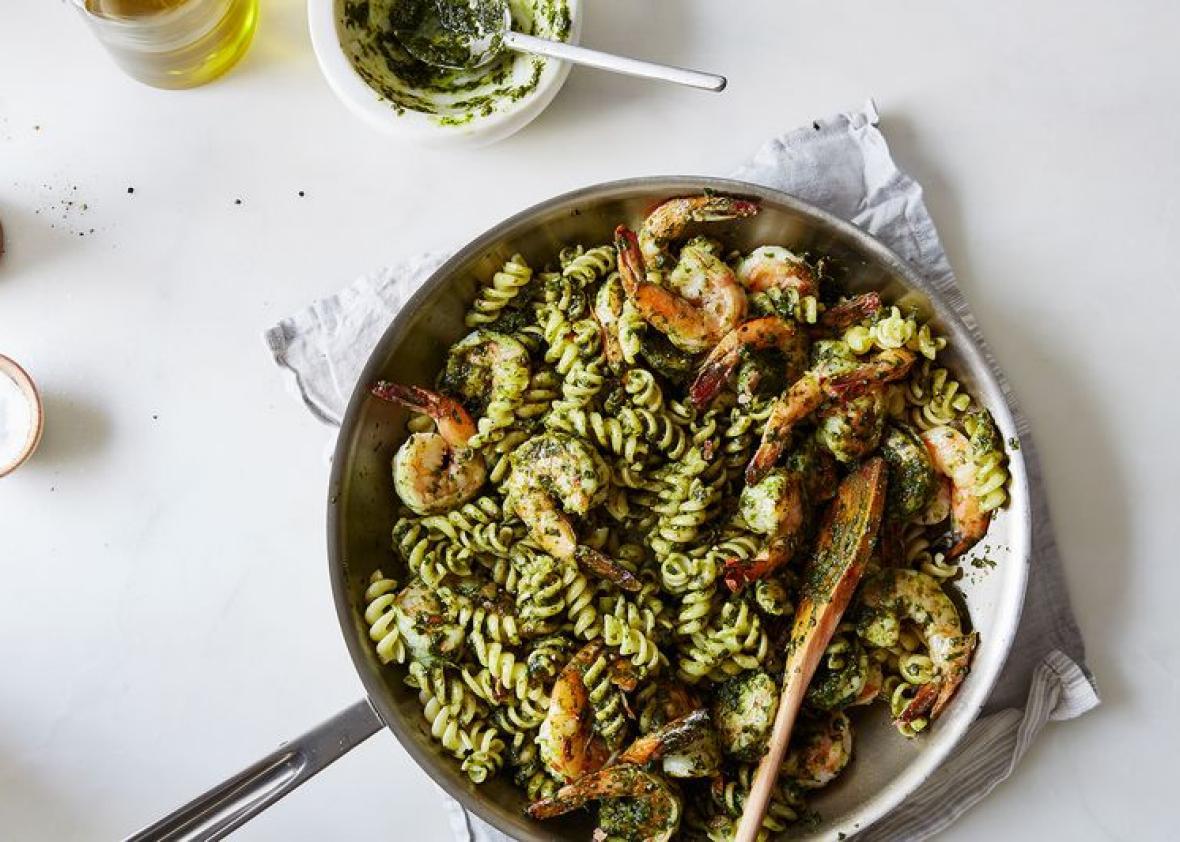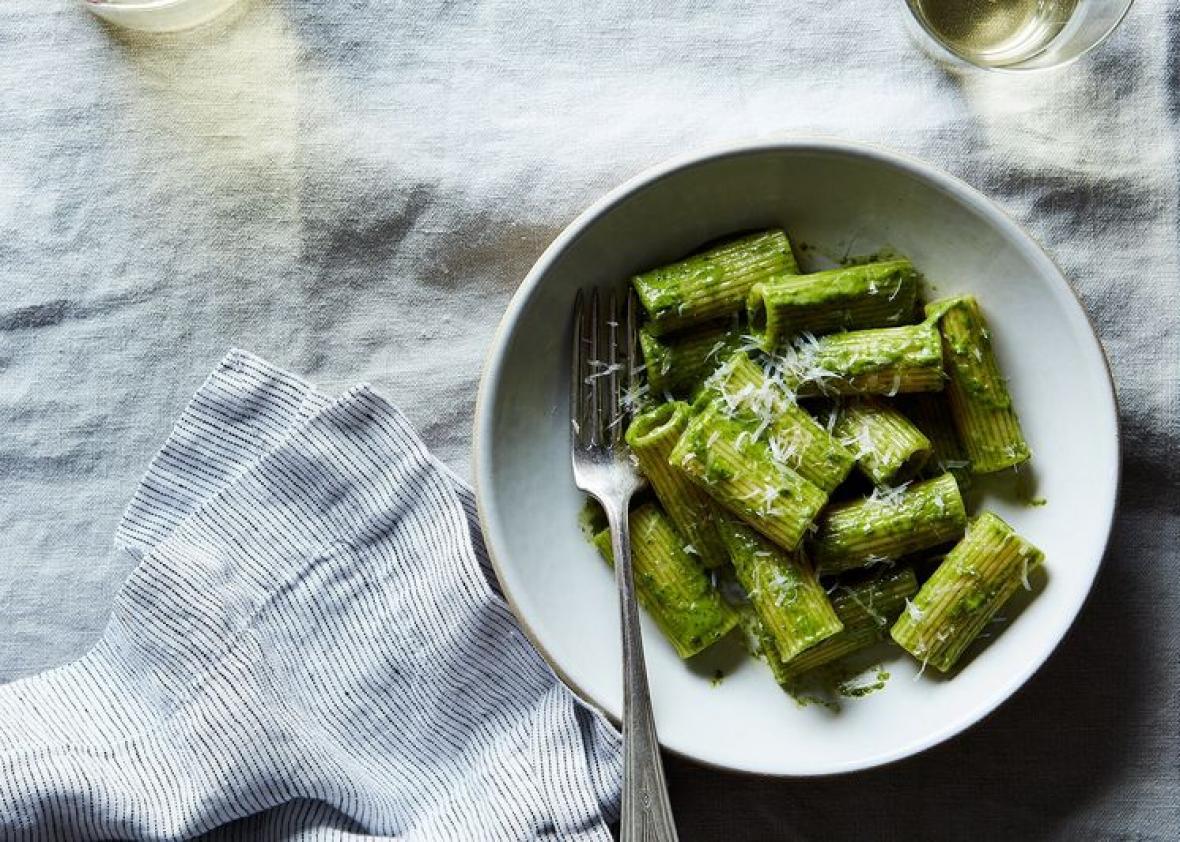This post originally appeared in Genius Recipes from Food52.
The recipe you see here is the 2008 winner of the World’s Best Pesto—sort of.
It’s since become the subject of internet legend. Perhaps you’ve already heard the tales of a young chef Danny Bowien—before every incarnation of Mission Chinese Food, every Jimmy Fallon appearance—beating out 100 other chefs to become the World Pesto Champion.
Here comes the lore: He was only allowed a mortar and pestle, no blenders or food processors! He didn’t even know he’d be competing! And 80 percent of the chefs he out-pestoed were from Liguria, the region where traditional pesto Genovese was born (and where a consortium now exists to protect it).
Bloggers blog of his pesto’s bright, pea-green color, its creamy weightlessness, its delicately layered flavors. We even have this photo of Bowien at a demo in England, making what is clearly a smooth, almost neon-green substance, proving this isn’t just standard-issue internet hyperbole.
But somehow the recipes published under his name look little to nothing like that stuff—instead, they appear to be well-meaning, but fairly normal pestos. Including most of our photos here.

Mark Weinberg
I will say that even the average-looking, editorially massaged versions of Bowien’s pesto are quite good and have certain traits in common with his storied wonder-sauce. Foremost, they all tone the garlic way, way down—he stresses this. Bon Appétit’s adaptation calls for only one thin slice of garlic; Lucky Peach allows a clove per quart of basil. Garlic can easily run amok, and you want the basil (and yes, the cheese) to carry the flavor.
Speaking of, all the published versions of his recipe use a combination of Parmesan and pecorino cheeses, as Bowien does; the former richer and nuttier, the latter adding a twinge of acidity and a pricklier, extra-salty dimension.
One last Bowien-ism is to add a bit of cold (sometimes iced) water, which helps keep the basil fresher-tasting, and slows it from oxidizing and turning black. (My boss Amanda Hesser pointed out that The London Cookbook, out this October, aims to do the same thing by freezing the food processor blade first, and some Italian cooks are known to chill the entire blender pitcher.)

Mark Weinberg
But the closest I’ve been able to come to Bowien’s legendary texture and color was by following the directions written down in a blog post about that demo from 2013, which I’ve adapted here. (Yes, I tried to get the chef himself to write down a definitive recipe for me, but I was unsuccessful—he must love (Not)Recipes as much as we do!)
What seems to make the difference is allowing the basil to quickly and completely whir into a generous amount of olive oil. The more mulched-up bits of basil that lollygag around getting exposed to air—and the longer they’re slashed at by ever-warming blades to get there, the more oxidation there will be (i.e., exposure to oxygen, and deterioration of color and fresh flavor).

Mark Weinberg
But by suspending the still-fresh basil in a cushiony coat of oil, almost like a loose, green aioli, you largely cut off its access to air. Oil creates an anaerobic environment, which is why botulism can pose a risk if you keep pesto around in the fridge longer than four days (so don’t do that—freeze it instead). But this also means less oxidation, which means that Bowien’s pesto is constantly glowing back at me when I open my fridge, like a perky tub of Ecto cooler.
Yes, you could also blanch the basil leaves, then shock them in an ice bath to stave off oxidizing, but their flavor will be dulled too (we’ve tested it). Of course, if you really want to be the World’s Best, you can attempt this in a mortar and pestle. It won’t be as smooth but might have an even more delicate flavor.
And maybe you’ll even get a reputation on the internet for it.
Danny Bowien’s World Championship Pesto
Makes almost 2 cups of pesto, enough to sauce 1 pound of pasta with some left over for other meals
- 3 packed cups basil leaves (100 grams, from 2 large bunches)
- 1 tablespoon pine nuts (untoasted)
- 1/2 teaspoon fine sea salt, or more to taste
- 3/4 cup olive oil, divided
- 1 small clove garlic
- 1/2 cup finely grated pecorino Romano (using a Microplane grater, 12 grams)
- 1/2 cup finely grated Parmigiano Reggiano (using a Microplane grater, 12 grams)
See the full recipe on Food52.
More from Food52:
The Muslim Holiday More of Us Should Know
The Year’s 20 Most Innovative Women in Food & Drink
A Cherished Fall Cooking Tradition That Saves Neither Time Nor Money
La Merenda, or How to Snack the Italian Way
Halfway Homemade Cheesy, Vegan Chili Fries
The Essential Grilling Technique the Food52 Team Still Can’t Agree On
